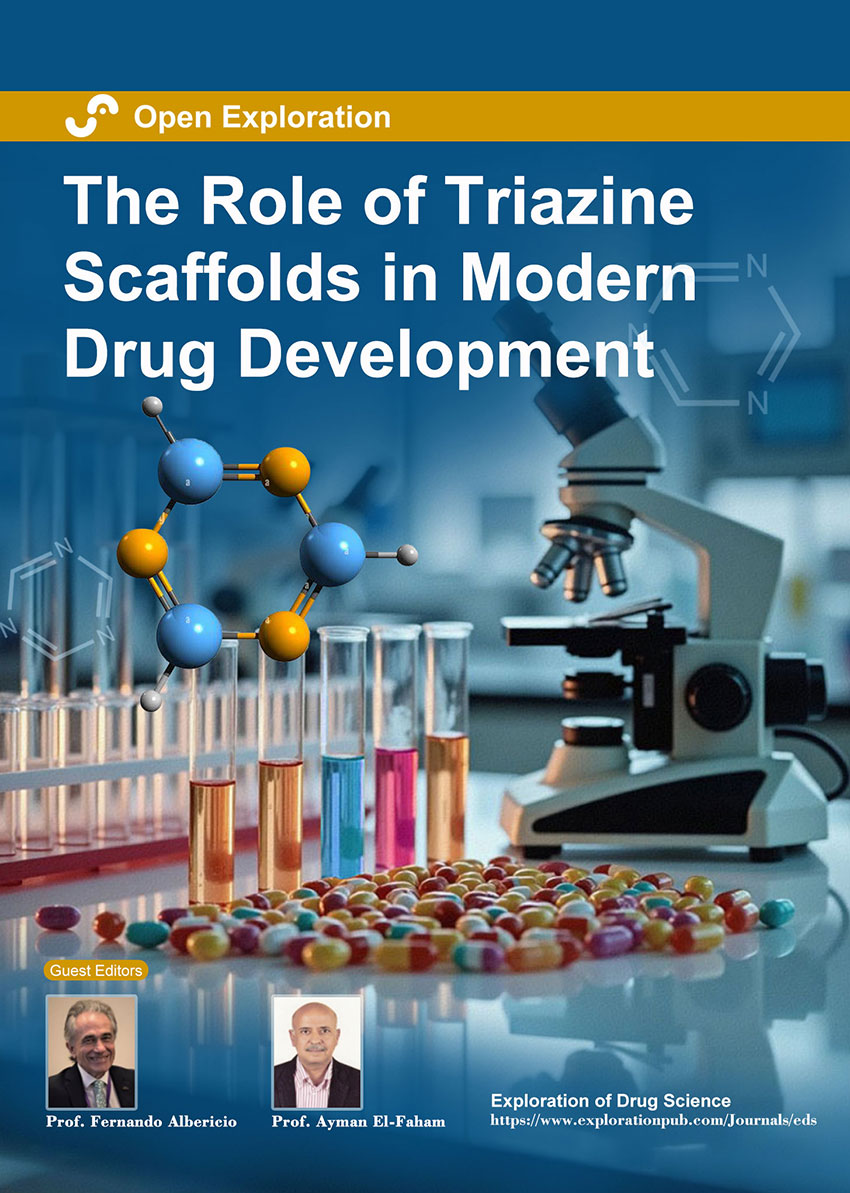
The Role of Triazine Scaffolds in Modern Drug Development
Guest Editors
Prof. Fernando Albericio E-Mail
Emeritus Professor, Department of Organic Chemistry, Universidad de Barcelona, Barcelona, Spain; Research Professor, School of Chemistry, University of KwaZulu-Natal, Durban, South Africa
Prof. Ayman El-Faham E-Mail
Professor, Department of Basic Medical Sciences, College of Medicine, Dar Al Uloom University, Riyadh, Saudi Arabia; Emeritus Professor, Chemistry Department, Faculty of Science, Alexandria University, Egypt
About the Special lssue
Triazine scaffolds have emerged as pivotal elements in contemporary drug development, offering a robust and adaptable framework for designing biologically active molecules. Comprising a six-membered ring with three nitrogen atoms, triazines, particularly the s-triazine (1,3,5-triazine) isomer serves as privileged structures in medicinal chemistry due to their synthetic tractability, chemical stability, and ability to interact with diverse biological targets.
Modern drug discovery increasingly relies on scaffold-based design strategies, and triazines fit this paradigm exceptionally well. Their symmetrical architecture allows for strategic substitution at multiple positions, enabling the fine-tuning of pharmacokinetic and pharmacodynamic properties. This makes them ideal candidates for developing inhibitors, receptor antagonists, and enzyme modulators across a wide range of therapeutic categories, including oncology, infectious diseases, inflammation, and neurodegeneration.
Clinically, triazine-based drugs such as Altretamine and Trazodone have already demonstrated the potential of this scaffold. Additionally, recent research has explored triazines as components in targeted cancer therapies, kinase inhibitors, and even in drug delivery systems due to their favorable physicochemical properties.
As challenges such as drug resistance and the need for selective targeting grow more urgent, triazine scaffolds provide medicinal chemists with a versatile and well-understood platform. With ongoing advancements in synthetic methodologies and computational modeling, the role of triazines in modern drug development is poised to expand further, driving innovation in therapeutic design.
Keywords: 1,3,5-Triazine, drug design, targeted cancer therapy, kinase inibitors, kinase inhibitors, drug delivery